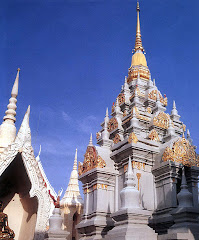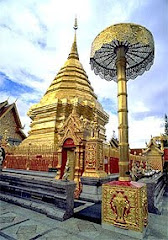Wat Nong Daeng in Puea sub-district was constructed in 1787 by the Thai Lue and Thai Phuan people. The main Buddha image was cast by Khruba Sitthikan. The first renovation of the assembly hall was done in 1949 and again later in 1995. It was completed in 1996. Within the compound of the temple is a large shady terrace. The Chofa – gable finial decoration of a Buddhist temple’s roof – is engraved into the sculpture of Nok Hatsadiling (Hastilinga) – a mythical bird in the literature whose tip of the beak is an elephant’s trunk. The Thai Lue people believe that it is a high-ranked animal from heaven. At the same time, the eaves boards are embellished with wooden fretwork, the unique ones of the Thai Lue people. The Buddha image is enshrined on the Chukkachi base – a masonry base of intertwined Nagas, called Naga Throne. It has been believed that the Naga is a symbol of gracefulness, goodness, and a protector of Buddhism. Wat Nong Daeng was granted the Award of Outstanding Performance in the category of Cultural Attraction in Northern Thailand in the 5th Thailand Tourism Awards 2004.
Tags: Wat Nong Daeng/Nan/Naga/thai temple/Thailand temple
















